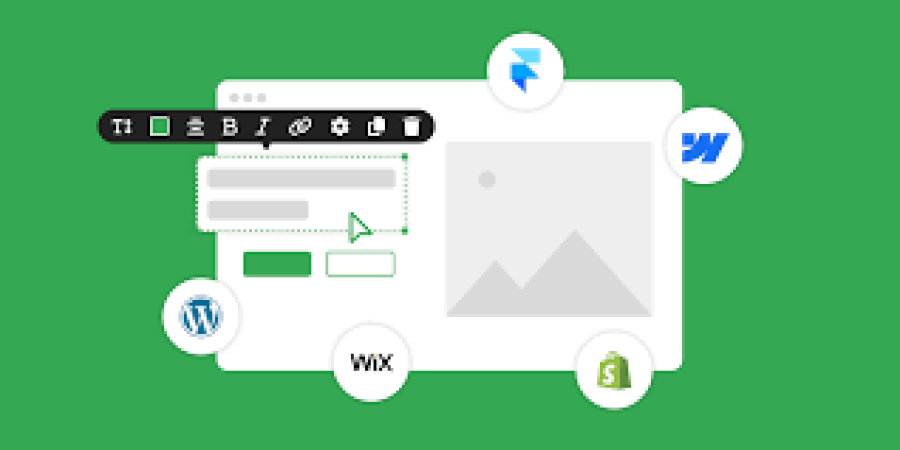The Best No-Code and Low-Code Tools for Freelancers
In 2025, freelancers are constantly seeking ways to deliver projects faster without compromising quality. No-code and low-code tools have become game-changers, empowering freelancers to build websites, apps, and workflows without deep programming knowledge. These platforms help freelancers expand their service offerings, speed up development, and focus on creative problem-solving.
At freelancerbridge, we understand the power of no-code and low-code solutions in modern freelancing. This guide dives into the best no-code and low-code tools available for freelancers in 2025, highlighting features, benefits, and practical use cases to boost your freelance career.
📘 Long Description: The Best No-Code and Low-Code Tools for Freelancers
🔹 1. Why No-Code and Low-Code Matter for Freelancers? 🚀
Faster Delivery: Build functional apps and websites rapidly without extensive coding.
Cost Efficiency: Reduce development costs and time spent on repetitive coding tasks.
Flexibility: Easily customize workflows and integrations to meet client needs.
Accessibility: Open up opportunities for freelancers without advanced programming skills.
Scalability: Start simple and add features as projects grow.
Focus on Design & UX: Spend more time on user experience and visual design.
🔹 2. No-Code vs Low-Code: What’s the Difference? 🤔
No-Code Tools: Allow building applications without writing any code. They use visual drag-and-drop interfaces, ideal for freelancers new to development.
Low-Code Tools: Require minimal coding but offer more flexibility and control, perfect for freelancers with some coding knowledge who want to speed up development.
🔹 3. Top No-Code Tools for Freelancers in 2025 💡
3.1. Webflow
Visual website builder with full design control.
CMS for dynamic content without coding.
SEO-friendly with built-in tools.
Ideal for freelancers building portfolios, business sites, and blogs.
Integrates with popular marketing tools.
3.2. Airtable
Flexible no-code database with spreadsheet interface.
Automations and integrations for workflows.
Great for project management, client tracking, and CRM.
Enables freelancers to organize data and automate processes easily.
3.3. Bubble
Drag-and-drop app builder for complex web apps.
No-code backend logic and database management.
Scalable hosting and integrations.
Perfect for freelancers creating SaaS products or marketplaces.
3.4. Zapier
Automation tool connecting 5000+ apps.
Automate repetitive tasks without coding.
Save time on data transfers, notifications, and workflows.
Essential for freelancers managing multiple tools.
3.5. Glide
Build mobile apps from Google Sheets.
Easy visual builder for freelancers focusing on mobile-first solutions.
Great for prototypes, client demos, and simple apps.
🔹 4. Leading Low-Code Tools for Freelancers 🔧
4.1. OutSystems
Enterprise-grade low-code platform.
Supports complex apps with advanced integrations.
Visual development plus coding options for customization.
Suitable for freelancers working with corporate clients.
4.2. Mendix
Powerful low-code app development platform.
Combines visual modeling with code for flexibility.
Supports agile project management.
Good for freelancers building scalable business applications.
4.3. Appgyver
Composer Pro offers no-code and low-code app development.
Drag-and-drop UI builder plus logic flows.
Free for freelancers with unlimited apps.
Supports web and mobile app deployment.
🔹 5. Benefits of Using No-Code and Low-Code Tools for Freelancers 🎯
Expand Service Portfolio: Offer app development, automation, and integrations.
Increase Earnings: Faster project turnaround leads to more clients.
Reduce Dependencies: Handle projects independently without hiring developers.
Better Client Communication: Visual tools help explain and demo concepts.
Easier Maintenance: Clients can manage content or workflows themselves post-launch.
Stay Competitive: Adopt trending technologies and meet evolving client demands.
🔹 6. SEO and Marketing Advantages with No-Code/Low-Code Sites 📈
Clean, SEO-friendly code output by tools like Webflow.
Fast loading times due to optimized frameworks.
Mobile responsiveness baked in for better search rankings.
Easy integration with analytics, tracking pixels, and marketing platforms.
Automation tools help with lead generation, email campaigns, and social media.
🔹 7. Best Practices for Freelancers Using No-Code and Low-Code Tools ✔️
Always customize templates to avoid generic results.
Optimize images and media for speed.
Regularly update SEO metadata.
Test websites and apps on multiple devices.
Use automation tools like Zapier to streamline workflows.
Backup project data and export code when possible.
Communicate clearly with clients about tool limitations and strengths.
📌 Summary Points for Freelancers
No-code and low-code tools are essential for modern freelancers.
Webflow, Airtable, Bubble, Zapier, Glide lead no-code solutions.
OutSystems, Mendix, Appgyver provide advanced low-code options.
These tools accelerate development, increase profitability, and improve client satisfaction.
Combining no-code/low-code with SEO best practices yields powerful results.
🧭 Conclusion
As a freelancer in 2025, mastering no-code and low-code tools is vital to thrive in a competitive market. These platforms empower you to build complex, beautiful, and SEO-optimized projects faster than ever. Explore the options mentioned here, experiment with different tools, and integrate them into your freelance workflow to unlock new opportunities.
At freelancerbridge, we encourage freelancers to stay ahead of trends and continually learn these versatile technologies for a successful freelance career.


 by Emily
by Emily




